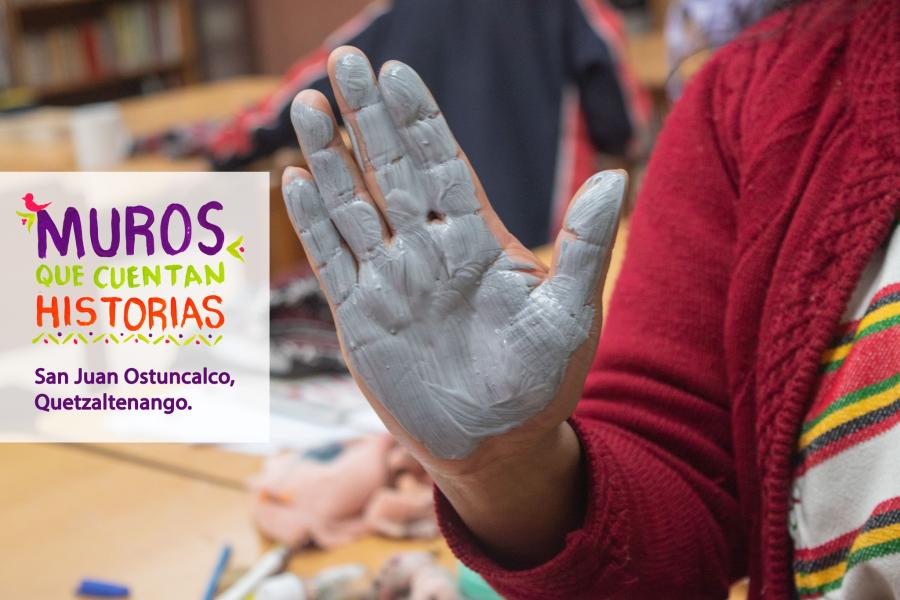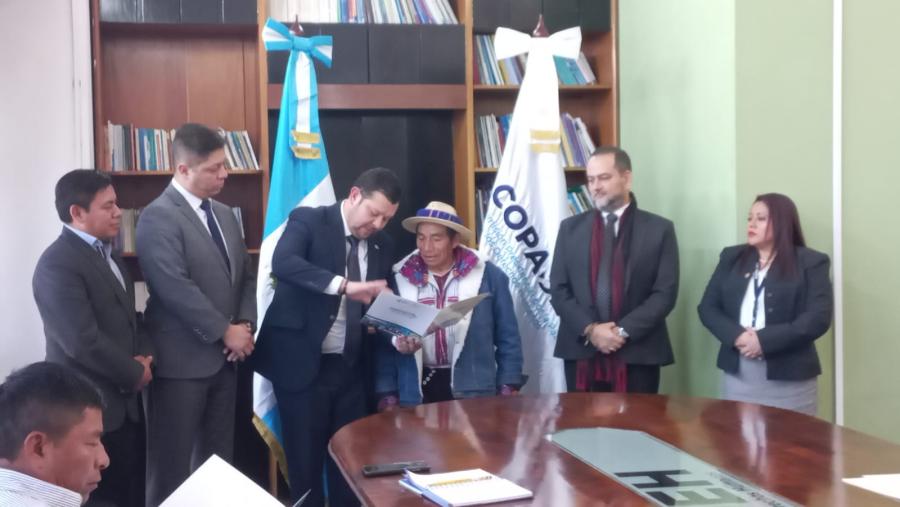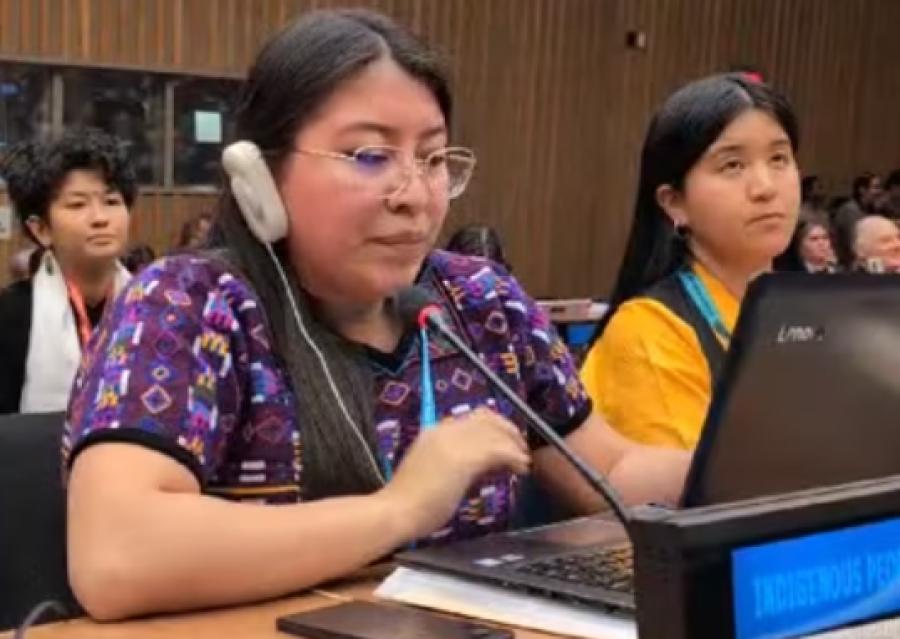Hundreds of thousands of evangelicals gathered here November 28 to celebrate the 100th anniversary of Protestantism in Guatemala. Only divine providence, they believe, can explain this year's remarkable turn of events. In March, the overthrow of a parish regime brought to power General Efraín Ríos Montt, convert of the California-based Church of the Word and first born-again dictator in history. Under his leadership, the army has turned back Marxist-led Indian guerrillas who threatened to end three decades of increasingly corrupt, brutal army rule.
"Here the one in charge is Jesus Christ," President Montt declared from the fortress-like tribunal in the capital's Campo de Marte. Hallelujahs rose from the crowd below. "We defend ourselves not by the army or its swords," he proclaimed, referring to the most successful counter-insurgency force in Central American, "but by the Holy Spirit."
To the regime's defenders, reports of continuing human rights violations are another sign of the international communist conspiracy they blame for Guatemala's difficulties.
Backed by President Montt, whom detractors fear could turn into an Ayatollah Khomeini, evangelical leaders in the United States and Guatemala have ambitious dreams for this deeply divided country. They plan to make it a New Israel, a model of Biblical righteousness for a Latin America which they consider lost in Roman Catholic idolatry and threatened by World Communism.
Evangelicals already claim 22% of Guatemala's population, by far the highest percentage in the traditionally Catholic countries of Latin America. Within a few years, they hope to have a majority. It is hard to spend an afternoon without hearing a fundamentalist harangue over a neighborhood radio, or the patter of Pentecostals babbling in tongues.
The new evangelical power center here is the Word Church. President Montt, who joined several years ago, has been followed by numerous military officers. Ironically, Word's parent mission, Gospel Outreach of Eureka, California, started as a ministry to West Coast flower children. Like many North American churches, it sent reconstruction workers following the 1976 Guatemalan earthquake, then started Bible studies in middle and upper class neighborhoods. Now President Montt meets weekly with Word leaders, and several members serve as his personal advisers.
The greatest test facing the New Israel is the Indian-populated western highlands, where the fighting has created an estimated half million displaced people. The government calls these people victims of guerrilla atrocities, but most seem to have resulted from successful army offensives against guerrilla strongholds. The offensives included massacres of civilians which, according to many reports, continued through the first five months of the Montt government.
Now, however, tens of thousands of hungry refugees are coming out of hiding and returning to their devastated villages under army protection, testifying to the success of President Montt's "fusiles y frijoles" (rifles and beans) program. When the previous regime started to draft Indians into "civil self-defense patrols," it led to confrontations between part of the Indian population and the guerrillas. Now the food caters to dependent populations. "The guerrillas never gave us anything" has become a refrain among these new army dependents, who are forced to organize into civil patrols. Some 350,000 Indians have joined the closely-supervised, usually poorly armed units, the government says, while its food-for-work and other programs have incorporated 250,000.
U.S.-based evangelical groups contribute heavily to the relief effort. They are coordinated by the relief arm of the Word Church, the Foundation for the Support of Indian Peoples (FUNDAPI), which raises money in the U.S. Under the name of the International Love Lift.
In 1983 the "fusiles y frijoles" program is to be replaced by "techo, tortillas y trabajo" (shelter, food and work). Reconstruction may be financed partly by a special $60 million levy on business associations. They have not greeted the idea with enthusiasm. According to a high official, the Montt government even plans to revive the rural cooperative movement which the previous regime shattered. However, to date there has been no talk of land reform. Instead, Indian participation on the new, advisory Council of State is said to show how Indians will define their future for themselves. According to a plan floated by the government's National Reconstruction Committee, communities are to be organized into "base committees" which report to military commissioners, and through them to the military hierarchy.
The distance the Montt regime has yet to travel in human rights is suggested by a scandal in San Pedro La Laguna, a heavily evangelical town on the tourist route through the western highlands. In what has become a common method of settling differences in faction-ridden, but formerly homicide-free, Indian towns, the military commissioners of San Pedro used their official position to extort money from political enemies. If the victims did not pay, they were denounced as subversives to the army, which took them away at night.
The commissioners were arrested in October after word reached President Montt, but numerous citizens - according to estimates by two townsmen, twenty-seven to thirty - had been killed without trial.
At his December meeting with Ronald Reagan, President Montt declared that even socialists will be free to participate in the new Guatemalan democracy. Since then he has announced elections for a constitutional assembly on March 23, 1984, the second anniversary of the coup which brought him to power. Were an open electoral system to emerge, the problems faced by most Guatemalans would probably produce a leftist government. Should peaceful avenues of change remain closed, the New Israel may prove to be only a middle chapter in a long and bloody struggle.
Soldiers peer out of the tower of the Catholic Church in Nebáj, Quiché, a department scarred by fighting between the Guatemalan Army and Marxist-led Indian guerrillas. Army atrocities in this area fueled a peasant rebellion which, a year ago, controlled much of the western Guatemalan highlands. Since then, a war between the government and the Indian population has turned into a civil war, with the government the clear winner.
As late as July 1982, the Guerrilla Army of the Poor (EGP) controlled the single, precarious road into Nebaj, a town of white-washed walls and red-tiled roofs in the Cuchumatanes Mountains. The Spanish priest who once said mass here is gone. His order left after three members were killed for starting social programs which the government regarded as guerrilla fronts.
In Nabaj alone some 12,000 refugees, or one third of this predominantly Ixíl Indian municipality, are now in the town center under army protection. In exchange for the minimum wage or food, they work for the government in gardens or on road construction. At night, relays of men, armed with M-1 rifles, go out on mandatory, army-organized civil patrols. Clashing occasionally with guerrillas the civil patrols now seem to be taking more casualties than the army.
The Indians of Quiché have pursued several avenues to redress their grievances. At elections they have voted heavily for the Christian Democratic Party, the only one to offer reform in Guatemala's right wing-skewed electoral system. Ironically, Indian hopes in the 1974 election centered on none other than General Efraín Ríos Montt, presidential candidate of the Christian Democrats and clear winner of that contest. When the ruling party stole the election, Ríos Montt accepted exile in Spain. Some of his less well situated supporters in the Ixíl area are said to have gone underground.
In the jungle along the Mexican border, the Guerrilla Army of the Poor was organizing at that time. Led by survivors of an earlier insurgency in the eastern, non-Indian part of the country, the EGP was more often avoided than welcomed by Indian peasants. Nonetheless, by 1976 clumsy army search-and-destroy missions drove people into the EGP.
While choosing between fraudulent political system and armed struggle, many Indians also turned to new religions. Catholic missionaries led a consciousness-raising cooperative movement to pressure for reform, while North American evangelical missionaries offered a more personal, moralistic path to salvation in this life and the next.
With their sermons against social injustice, the Catholic clergy and their lay catechists took the brunt of army reprisals against EGP assassinations and ambushes. Pointing to two or three priests now with the guerrilla forces, government partisans maintain that radical curates were running guns. Dissenters say that the priests only followed their congregations into the wilderness, following army atrocities and the murder of colleagues.
The government's position in the Ixíl area improved after January 1982, when evangelicals in the municipality of Cotzal rallied around a new army commander. With the aid of informers, the army was able to strike at EGP combatants, take prisoners, extract more information, and dismantle guerrilla infrastructure. In response, the EGP, killed more people suspected of betraying the revolution and fell afoul of the government's new civil patrols, alienating even more of the population. As the army stepped up attacks on guerrilla-controlled hamlets, then, hungry refugees started to flood into its hands.
The most dramatic exodus occurred in August and September 1982, when an Ixíl pastor of the Pentecostal Church of God led 2,000 people - half evangelical, half Catholic - out of the Nebaj township of Salquil and into army protection.
Like many refugees under army control, the pastor says that the guerrillas "deceived" his people. EGP combatants had promised that they would feed the people who had fed them; provide arms for defense against the army; and win the war by the March 1982 election.
When soldiers destroyed their crops and homes, however, the people went hungry. "We no longer had food, and we no longer had houses," said a refugee leader. "We were without clothes, without medicine, and there had been many deaths among us." They could not even flee to the Pacific Coast to work on plantations.
To evangelical relief workers, the pastor attributed the mass escape from Salquil to atheistic religious persecution. Six members of his church had been killed by the guerrillas, he said. Four had been strangled with lassos in the hamlet of Tu Jolom, in March 1982, for filling in stake pits which the EGP had placed near their church. This would have brought army reprisals and, according to the elders, violated the Biblical injunction to love thy neighbor.
But the army had also killed members of the Pentecostal Church, 29 of them in the hamlet of Tu Chobuc on May 1, 1982. When helicopters landed, three families gathered to pray. The troops discovered a cave of guerrilla supplies nearby, took the men, women and children there, and cut their throats, the pastor stated in the presence of soldiers.
Meanwhile, over the radio, the country's new Christian president could be heard offering amnesty and praying. Spies from the town of Nebaj said that the people there had new confidence in the army. Fearing EGP reprisals, the pastor led 237 people out of Salquil at night. Later, young men from this group, carrying loudspeakers and protected by soldiers, persuaded 1,740 more to come out of hiding and surrender to the army.
"The Bible says that we should obey the President," the pastor told a missionary. "The Bible tells us that we shouldn't join the guerrillas." According to a popular North American evangelical teaching in Latin America, governments must be obeyed because they are divinely ordained.
Unlike most Nebáj refugees, who have squeezed into the town center, the 2,000 from Salquil live in a camp called "Nueva Vida" (New Life) a few miles to the north. From the military post at the summit, shelters spill down the hillside away from the airstrip, where small planes and machine-gun mounted helicopters kick up dust clouds. Trees have been felled in every direction, to guard against ambush.
The people at Nueva Vida appear to be in good physical condition. They seem to be free to come and go, and to get along with the military detachment there. Some of the soldiers are Ixíl Indians themselves, reflecting a change in the old policy of posting native soldiers to other Indian groups.
About 5,000 people remain under guerrilla authority in Salquil. However, Nueva Vida residents said they did not wish to return there until everyone has surrendered to the government. The army says the 5,000 are being held hostage, but refugees described them as guerrilla supporters. In any case, when troops approach, they flee. So while the army soon hopes to begin reconstruction - in the form of new, concentrated settlements to which roads will be built - relief workers are planning for a longer stay.
In the town of Nebáj, most people say they feel much safer than six months before. The road is open again, and main guerrilla forces are only a memory. The sound of gunfire still reaches the town at night, however. On November 20 a member of the civil patrol was killed in a guerrilla ambush, an hour away on foot.
At the man's funeral in the plaza the next day, the authorities spent an hour exhorting an absent populace to pay their respects. According to a missionary, members of rival religions did not wish to attend a traditional Ixíl funeral. According to a townsman, the people were being summoned to more patriotic events than they wished to attend.
At the heavily guarded internment above town, the local army commander exhorted the Indian crowd to be prepared to make the supreme sacrifice against the enemy of them all, foreign-instigated, terroristic Communism. An Ixíl civil patrol leader berated the guerrilla spies he knew to be among the mourners; they would receive their just reward.
"Nothing has changed, we are in between," moaned a civil patrol member in private. Members derelict in their duty had been thrown into the town fountain, he said, and men who did not join the patrols were considered communist sympathizers. While some fled to the coast, others - dominated by personal enemies as subversives - were arrested by the army. Of these, some were released after days of ill treatment, and others were never again seen alive. Both sides in this conflict seem to include many reluctant warriors.
Article copyright Cultural Survival, Inc.



